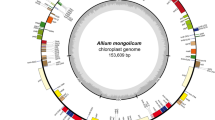Abstract
The exon 2 of chalcone synthase (CHS) gene is relatively conserved during evolution. In this study, three exon 2 fragments from two species in gymnosperm (Cycas panzhihuaensis, Ginkgo biloba) and seven from four species in angiosperm (Magnolia denudata, Salix babylonica, Nymphaea tetragona, Camellia japonica) have been amplified by PCR from genomic DNA and sequenced. Together with other 73 sequences ofCHS collected from EMBL database and literature, these sequences, which embrace 19 families of gymnosperm and angiosperm, have been analyzed for their phylogenetic relations by parsimony method. The result indicated that sequences from the same systematic family usually grouped together except those from Theaceae, Magnoliaceae and Nymphaeaceae. The relative rate test revealed the rate heterogeneity of CHS genes among the families. For the nucleotide substitution the sequences from Asteraceae and Solanaceae evolve faster than those from the other families analyzed while the sequences from Poaceae, Asteraceae and Solanaceae evolve faster for the nonsynonymous substitution. These results suggest that the duplication and extinction events of CHS genes are different among systematic families, therefore it seems impractical to look for orthologous sequences from CHS genes to study plant phylogeny at the family level andlor above. However, it is possible to do so below the family level.
Similar content being viewed by others
References
Chase, M. W., Soltis, D. E., Olmstead, R. G. et al., Phylogenetics of seed plants: an analysis of nucleotide sequences from the plastid generbcL, Ann. Missouri. Bot. Gard., 1993, 80: 528.
Soltis, D. E., Soltis, P. S., Nickrent, D. L. et al., Angiosperm phylogeny inferred from 18S ribosomal DNA sequence, Ann. Missouri. Bot. Gard., 1997, 84: 1.
Kim, K. J., Jansen, R. K., NdhF sequence evolution and the major clades in the sunflower family, Proc. Natl. Acad. Sci. USA, 1995, 92: 10379.
Mathews, S., Donoghue, M. J., The root of angiosperm phylogeny inferred from duplicate phytochrome genes, Science, 1999, 286 (5441): 947.
Koes, R. E., Francesca, Q., Joseph, N. M. Mol., The flavonoid biosynthetic pathway in plants: function and evolution, Bioessays, 1993. 16: 123.
Martin, C. R., Structure, function, and regulation of the chalcone synthase, International Review of Cytology, 1993, 147: 233.
Ursula, N. K., Barzen, E., Bernhardt, J. et al., Chalcone synthase genes in plants: a tool to study evolutionary relationships, J. Mol. Evol., 1987, 26: 213.
Sommer, H., Saedler, H., Structure of the chalcone synthase gene ofAntirrhinum majus, Mol. Gen. Genet., 1986, 202: 429.
Thompson, J. D., Higgins, D. G., Gibson, T. J., CLUSTAL W: improving the sensitivity of progressive multiple sequence alignment through sequence weighting, positions-specific gap penalties and weight matrix choice, Nucleic Acids Res., 1994. 22: 4673.
Felsenstein, J., PHYLIP (Phylogeny Inference Package) version 35, distributed by the author, Department of Genetics, University of Washington, Seattle, USA, 1993.
Robinson, M., Gouy, M., Gautier, C. et al., Sensitivity of the relative-rate test to taxonomic sampling, Mol. Biol. Evol., 1998, 15: 1091.
Stafford, H. A., Flavonoid evolution: an enzymatic approach, Plant Physiol., 1991, 96: 680.
Hemnann, A., Schulz, W., Hahlbrock, K., Two alleles of the single-copy chalcone synthase gene in parsley differ by a transposon-like element, Mol. Gen. Genet., 1988, 12 (1): 93.
Feinbaum, R. L., Ausubel, F. M., Transcriptional regulation of theArabidopsis thaliana chalcone synthase gene, Mol. Cell. Biol., 1988, 8: 1985.
Wienand, U., Sommer, H., Schwarz, U. et al., A general method to identify plant structural genes among genomic DNA clones using transposable element induced mutations, Mol. Gen. Genet., 1982, 187: 195.
Daniel, L. N., Douglas, E. S., A comparison of angiosperm phylogenies from nuclear 18S rDNA and rbcL sequences, Ann. Missouri. Bot. Gard., 1995, 82: 208.
Wingender, R., Rohrig, H., Horicke, C. et al., Differential regulation of soybean chalcone synthase genes in plant defense, symbiosis and upon environmental stimuli, Mol. Gen. Genet., 1989, 218(2): 315.
Author information
Authors and Affiliations
About this article
Cite this article
Wang, J., Qu, L., Chen, J. et al. Molecular evolution of the exon 2 of CHS genes and the possibility of its application to plant phylogenetic analysis. Chin.Sci.Bull. 45, 1735–1742 (2000). https://doi.org/10.1007/BF02886256
Received:
Issue Date:
DOI: https://doi.org/10.1007/BF02886256




